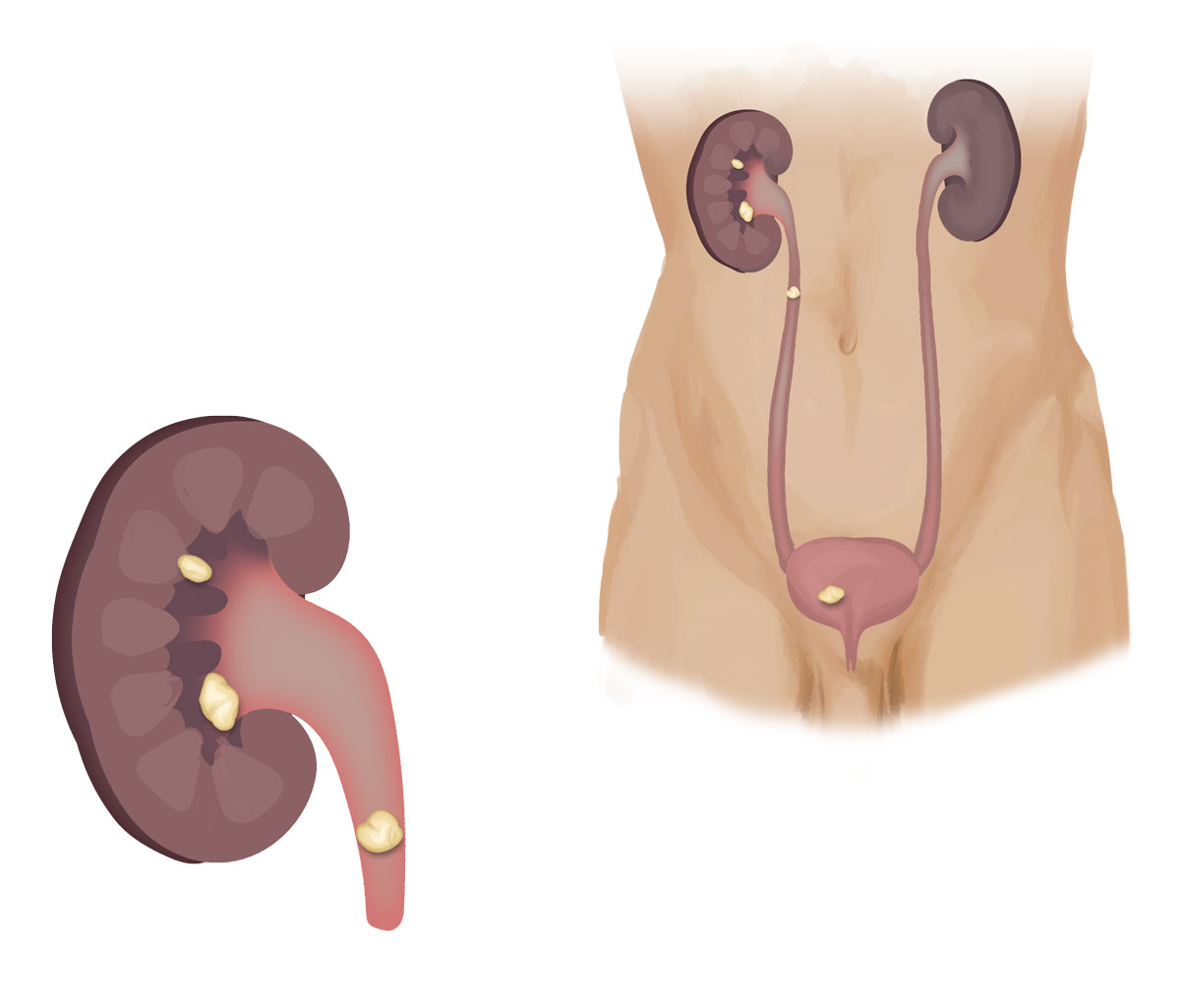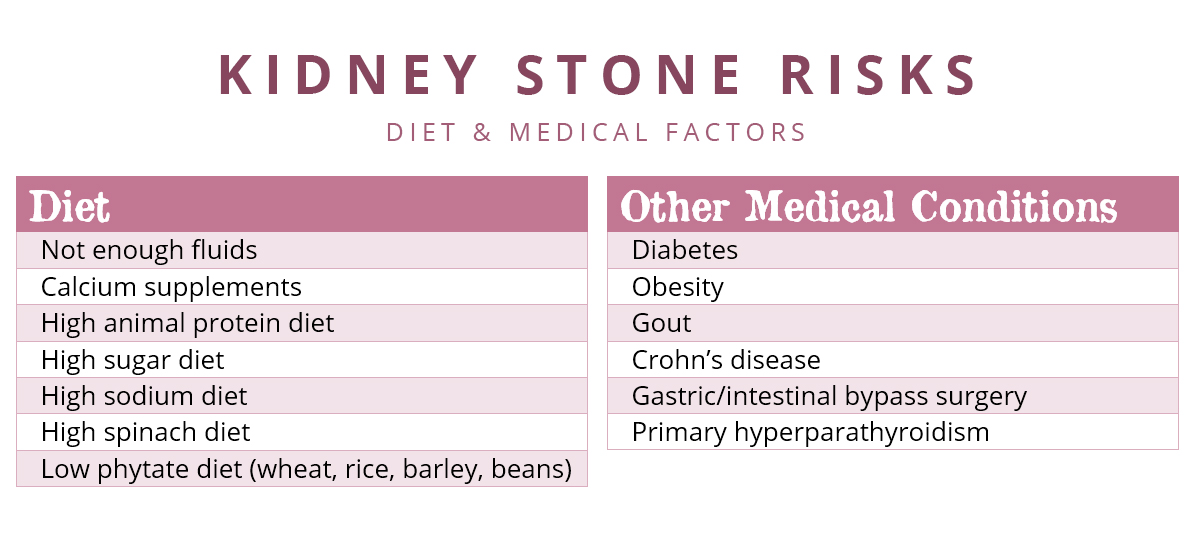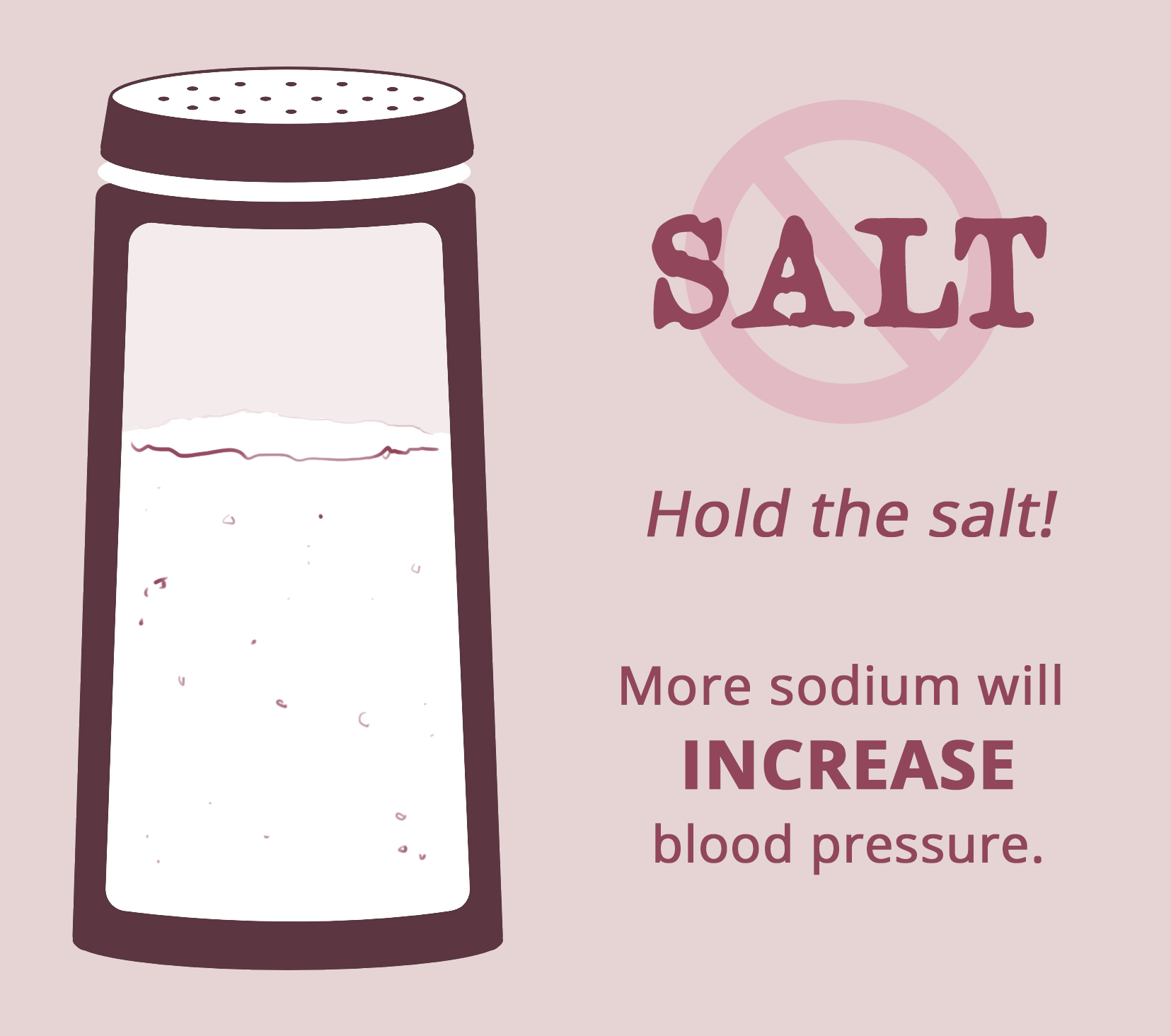Causes of Kidney Stones
There are many theories as to how a stone is formed. In general, crystals are initially formed within the nephron. They get anchored and gradually increase in size to form a stone.
80% of patients with stones form calcium stones. Most of these are primarily of calcium oxalate or, less often, calcium phosphate
A kidney stone can develop because of many reasons. High blood levels of calcium, oxalate, cystine or uric acid and low urine volume (dehydration) are a few reasons. General risk factors for calcium stones are:
Risk Factors
Each type of kidney stone has different risk factors.
|
Calcium Oxalate Stones |
Uric Acid Stones |
Staghorn Calculi |
|---|---|---|
|
High calcium in blood |
This is genetic and is suspected in those who form stones in childhood High uric acid levels |
This is usually caused by recurrent UTIs. |
Is this going to be painful when I pass my stone?
Maybe, maybe not! It’s almost guaranteed you’ll be in pain either in the side of your rib cage or lower abdomen (possibly toward the groin). You may also encounter:
- Visible blood in the urine
- May pass small stones in urine called “sand” or “gravel”
- Nausea, vomiting and pain on urination are other symptoms
What tests will my doctor order?
- Non-contrast CAT scan
- Ultrasound: Although this may miss small stones, it’s recommended for people who should avoid radiation, including pregnant women and children
- UA
- Urine culture
- Stone analysis
- BUN, Cr, electrolytes, calcium, phosphate
- Parathyroid hormone
- 24 hour urine test
Experiencing severe pain?
Go to the ER if your kidney stone is causing you serious pain
Kidney Stone Removal
Treatment depends upon the size, type and location of the stone (s).
A general rule of thumb is……
| Stones < 5mm | Will dissolve and pass in urine. Try conservative management…no surgery yet! |
|---|---|
| Stones 5-10 mm | Try ‘conservative measures’ first! If no result, see a Urologist |
| Stones > 10 mm |
See a urologist:, they can break up or remove the stone with:
|
Conservative Management: It’s best to pass stones naturally!
The general idea is to have LESS CALCIUM flowing through your kidney.
First, grab your water bottle (or maybe a jug)! You need to increase your water intake to 2 liters a day, so drink up!
Equally important is to cut out salt! Look at food labels for sodium content and track how much you’re consuming a day. Processed food has a lot of added salt, so you may find the number to be quite surprising.
Start with the 2 listed above and leave the rest to Dr. G . To complete the stone treatment you will need to know what type of stone you are passing.
Contact Dr. G : If you pass a stone while urinating please try and retrieve it. Bring it in to the office and we can send it out for analysis. We need to know what type of stone you are passing to provide you with proper treatment.



